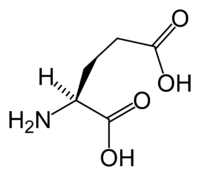
Cerebellar demyelination and neurodegeneration associated with mTORC1 hyperactivity may contribute to the developmental onset of autism‐like neurobehavioral phenotype in a rat model
Sign Up to like & getrecommendations! Published in 2022 at "Autism Research"
DOI: 10.1002/aur.2688
Abstract: The cerebellum hosts more than half of all neurons of the human brain, with their organized activity playing a key role in coordinating motor functions. Cerebellar activity has also been implicated in the control of… read more here.
Keywords: phenotype; autism; mtorc1 hyperactivity; model ... See more keywords

Protein kinase C beta relieves autism‐like behavior in EN2 knockout mice via upregulation of the FTO/PGC‐1α/UCP1 axis
Sign Up to like & getrecommendations! Published in 2022 at "Journal of Biochemical and Molecular Toxicology"
DOI: 10.1002/jbt.23236
Abstract: Increasing evidence suggests that disruption of neuron activity contributes to the autistic phenotype. Thus, we aimed in this study to explore the role of protein kinase C beta (PKCβ) in the regulation of neuron activity… read more here.
Keywords: fto; protein; like behavior; autism like ... See more keywords

Amelioration of autism-like social deficits by targeting histone methyltransferases EHMT1/2 in Shank3-deficient mice
Sign Up to like & getrecommendations! Published in 2019 at "Molecular Psychiatry"
DOI: 10.1038/s41380-019-0351-2
Abstract: Many of the genes disrupted in autism are identified as histone-modifying enzymes and chromatin remodelers, most prominently those that mediate histone methylation/demethylation. However, the role of histone methylation enzymes in the pathophysiology and treatment of… read more here.
Keywords: shank3 deficient; autism like; autism; deficient mice ... See more keywords

Elevated protein synthesis in microglia causes autism-like synaptic and behavioral aberrations
Sign Up to like & getrecommendations! Published in 2020 at "Nature Communications"
DOI: 10.1038/s41467-020-15530-3
Abstract: Mutations that inactivate negative translation regulators cause autism spectrum disorders (ASD), which predominantly affect males and exhibit social interaction and communication deficits and repetitive behaviors. However, the cells that cause ASD through elevated protein synthesis… read more here.
Keywords: autism like; autism; translation; protein synthesis ... See more keywords

Maternal treatment with aripiprazole prevents the development of a valproic acid-induced autism-like phenotype in juvenile male mice
Sign Up to like & getrecommendations! Published in 2023 at "Behavioural Pharmacology"
DOI: 10.1097/fbp.0000000000000718
Abstract: Autism spectrum disorder (ASD) describes a heterogeneous group of neurodevelopmental conditions characterized by deficits in social communication and repetitive behaviors. Aripiprazole (APZ) is an atypical antipsychotic that can safeguard mice against autism-like behavior induced by… read more here.
Keywords: maternal treatment; mice; valproic acid; treatment ... See more keywords

Hematopoietic stem cell transplantation ameliorates maternal diabetes–mediated gastrointestinal symptoms and autism‐like behavior in mouse offspring
Sign Up to like & getrecommendations! Published in 2022 at "Annals of the New York Academy of Sciences"
DOI: 10.1111/nyas.14766
Abstract: Epidemiological studies have shown that maternal diabetes is associated with autism spectrum disorder development, although the detailed mechanism remains unclear. We have previously found that maternal diabetes induces persistent epigenetic changes and gene suppression in… read more here.
Keywords: maternal diabetes; mouse; like behavior; diabetes mediated ... See more keywords

Vitamin B6 Deficiency Induces Autism-Like Behaviors in Rats by Regulating mTOR-Mediated Autophagy in the Hippocampus
Sign Up to like & getrecommendations! Published in 2023 at "Behavioural Neurology"
DOI: 10.1155/2023/6991826
Abstract: Vitamin B6 (VB6) exhibits therapeutic effects towards autism spectrum disorder (ASD), but its specific mechanism is poorly understood. Rat dams were treated with VB6 standard, VB6 deficiency, or VB6 supplementary diet, and the same treatment… read more here.
Keywords: like behaviors; vb6 deficiency; mtor; deficiency ... See more keywords

Lactiplantibacillus plantarum N-1 improves autism-like behavior and gut microbiota in mouse
Sign Up to like & getrecommendations! Published in 2023 at "Frontiers in Microbiology"
DOI: 10.3389/fmicb.2023.1134517
Abstract: Introduction The gut-brain axis has been widely recognized in autism spectrum disorder (ASD), and probiotics are considered to potentially benefit the rescuing of autism-like behaviors. As a probiotic strain, Lactiplantibacillus plantarumN-1(LPN-1) was utilized to investigate… read more here.
Keywords: like behaviors; autism like; gut microbiota;

Prenatal GABAB Receptor Agonist Administration Corrects the Inheritance of Autism-Like Core Behaviors in Offspring of Mice Prenatally Exposed to Valproic Acid
Sign Up to like & getrecommendations! Published in 2022 at "Frontiers in Psychiatry"
DOI: 10.3389/fpsyt.2022.835993
Abstract: This study was performed to evaluate the effects of prenatal baclofen (a GABAB receptor agonist) treatment on the inheritance of autism-like behaviors in valproic acid (VPA)-exposed mice. VPA model mice (first generation, F1) that were… read more here.
Keywords: autism; gabab receptor; autism like; mice ... See more keywords

Haploinsufficiency of a Circadian Clock Gene Bmal1 (Arntl or Mop3) Causes Brain-Wide mTOR Hyperactivation and Autism-like Behavioral Phenotypes in Mice
Sign Up to like & getrecommendations! Published in 2022 at "International Journal of Molecular Sciences"
DOI: 10.3390/ijms23116317
Abstract: Approximately 50–80% of children with autism spectrum disorders (ASDs) exhibit sleep problems, but the contribution of circadian clock dysfunction to the development of ASDs remains largely unknown. The essential clock gene Bmal1 (Arntl or Mop3)… read more here.
Keywords: clock gene; bmal1; like behavioral; autism like ... See more keywords